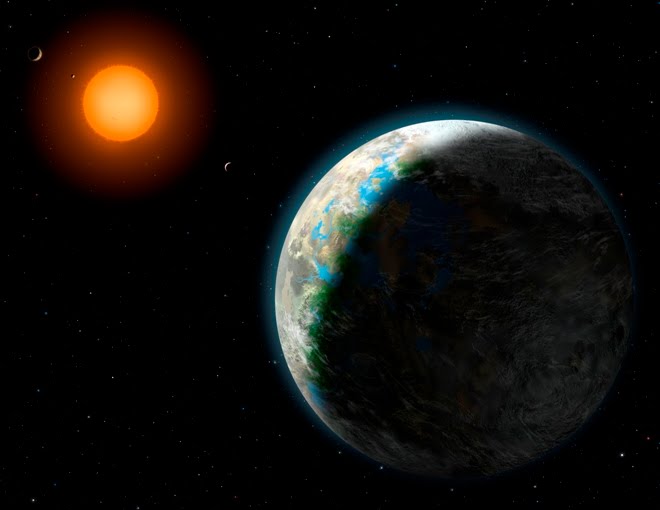The potential effects of the Moon's closest passing to Earth in 18 years may be exaggerated, however it is a fact that on March 19th, 2011, the Moon will illuminate our night sky from just 221,567 miles (356,577 kilometers; closest she has been in 18 years) away, and in addition, it will be full moon!
According to Universe Today:
It is a scientific fact when the Moon is at perigee there is more gravitational pull, creating higher tides or significant variations in high and low tides. In addition, the tidal effect of the Sun’s gravitational field increases the Moon’s orbital eccentricity when the orbit’s major axis is aligned with the Sun-Earth vector. Or, more specifically, when the Moon is full or new.
For those who totally dismiss the idea that 2012 "end of era" predictions may have been astronomically derived, next weekend could be the beginning of a revised world view. For those of us who look to the stars and other heavenly bodies as sometime causes of cataclysmic weather on Earth, it may be wise to seek inland, higher ground first. Then, and only after sanctuary has been found, we can hope and pray that this lunar event is benign.
Supermoon and astronomy related links:
Space.com Article: Will March 19 'Supermoon' Trigger Natural Disasters?
Universe Today: Supermoon or Superhype?
1993 Storm of the Century, 5 days after "supermoon"
Great Flood of 1993, from one month after to seven months after "supermoon"
UPDATE: AS Japanese earthquake / tsunami happened one day after this post, the following link was added on March 15th, 2011:
Historical and future extreme supermoons, links to Japan, Haiti, Indonesia earthquakes
Astronomy blog with news on Gliese 581g, Exoplanets, 2012 Transit of Venus, Zarmina's World, exoplanetary exploration, Extreme Supermoons, Kepler telescope, 2012 astronomy, Maya prophecies, links to astronomy websites, 2012 Transit of Venus, 21st century architecture, astronomers, solar energy, astronomical news.
Is There LIFE on Planet GJ581g?
GJ 581 g is an Earth-like planet recently discovered orbiting Gliese 581, a red dwarf star categorized as M Dwarf. This new discovery is perceived by scientists as as a Goldilocks type sphere - not too hot, not too cold. Nicknamed Zarminas World (after his wife Zarmina) by project leader Steven S Vogt, GJ581g will fascinate and enthrall Earthlings for generations to come.
GJ581G Orbiting Gliese 581

Earth Has A Twin
Solar Powered System

Astronomy News Info Photos Telescopes
Chitika Network Links
Astronomy For Everyone
Green Mutual Fund Investing Info
Popular Posts
-
BEIJING -- China plans to launch space labs and manned ships and prepare to build space stations over the next five years, according to a pl...
-
To me it seems likely that the Transit of Venus in 2012 is the most obvious reason the Mayan priests would define 2012 as the end of one er...
-
Meteor shower to be obscured by daylight, full moon CAPE CANAVERAL, Fla. -- Heads-up, meteor fans. As many as 750 meteors an hour are expect...
-
Here are some of the most recent Mars images released by NASA, taken from the Curiosity rover in recent days: Check b...
-
Sustainable Tourism: A Key to Global Solutions by Dr. Reese Halter and Dr. Dave Randle When most people think of tourism, they probably don...
astronomycentral.co.uk
Best Green Stocks Investing Blog
NASA Watch
Subscribe to:
Post Comments (Atom)
GJ581g Zarminas World Info and Links
Search Green Stocks Investing Network

Custom Search



No comments:
Post a Comment